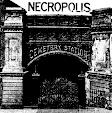ON THE FIFTH NIGHT OF HALLOWEEN … I watched The Night House (2020), directed by David Bruckner. Rebecca Hall stars as Beth, a woman grieving the loss of her husband by suicide. Her husband was an architect who designed and built their elegant lake house. While sorting through her husband’s things, Beth discovers a set of blueprints for not only this house but a mirror-image house where the rooms are identical but reversed. Through disturbing dreams in which she believes her husband is speaking to her, she is led to search an area directly opposite from her across the lake. Here she finds an unfinished version of the mirror-image house. Eventually, she stumbles upon the corpses of a number of women who look like her hidden under the floorboards. These women were bound and strangled by her husband.
Well, partly.
You see, in high school, Beth was in an accident that left her clinically dead for four minutes. Rather than a light at the end of the tunnel, what she experienced was only blackness, which she calls “Nothing.” This Nothing turns out to be an entity that wants her back. The entity tried to take possession of her husband and make him strangle Beth. But he was able to fool the Nothing by luring look-alikes of Beth into the mirror-image house and having the Nothing kill them instead. Over time, though, his resistance to the Nothing started to fail, so he killed himself. Now the Nothing begins appearing to Beth, seeking to reclaim her. The most creative way it appears is as a humanoid shape formed by the gaps between walls and objects when seen from certain perspectives, similar to Salvador Dalí’s illusory faces in paintings like “Apparition of a Face and Fruit Dish on a Beach.”
The Night House is an evocative, thoughtful, jarring, and extremely well-crafted work of new horror cinema. It's enriched further by Rebecca Hall’s powerful performance. I especially enjoyed it as a worthy entry in the subgenre of architectural horror, alongside classics like The Shining.
With regard to our TWISTED TWINS & DUPLICITOUS DOPPELGÄNGERS theme, once again the appearance of a doppelgänger—in this case an entity that wears the husband’s face in an attempt to return Beth to its sepulchral embrace—leads to the construction of a labyrinth of mirrors. We all see our own doppelgängers every day, in the mirror. However, the mirror doubles not only our faces but our whole world. When this double world behind the mirror itself reflects a mirror, the result is a set of infinite false hallways inhabited by infinite false faces, i.e. a labyrinth. The Night House’s major innovation on the doppelgänger, though, is the idea that nothingness itself, the void between substantial surfaces, is the malevolent entity behind all duplicate pretenders. It’s also interesting that the film’s plot depends on the real-world phenomenon of doppelgängers, in the sense of people who closely resemble us on the surface, so much so that we can be mistaken for them. (Even Beth’s best friend mistakes her for a woman in a picture Beth finds on her husband’s phone.) If there really are other people out there who so closely reproduce our features that they can be mistaken for us, perhaps the distinctness of our identity is closer to Nothing, the helpmate of Death, than we would like to think.


No comments:
Post a Comment